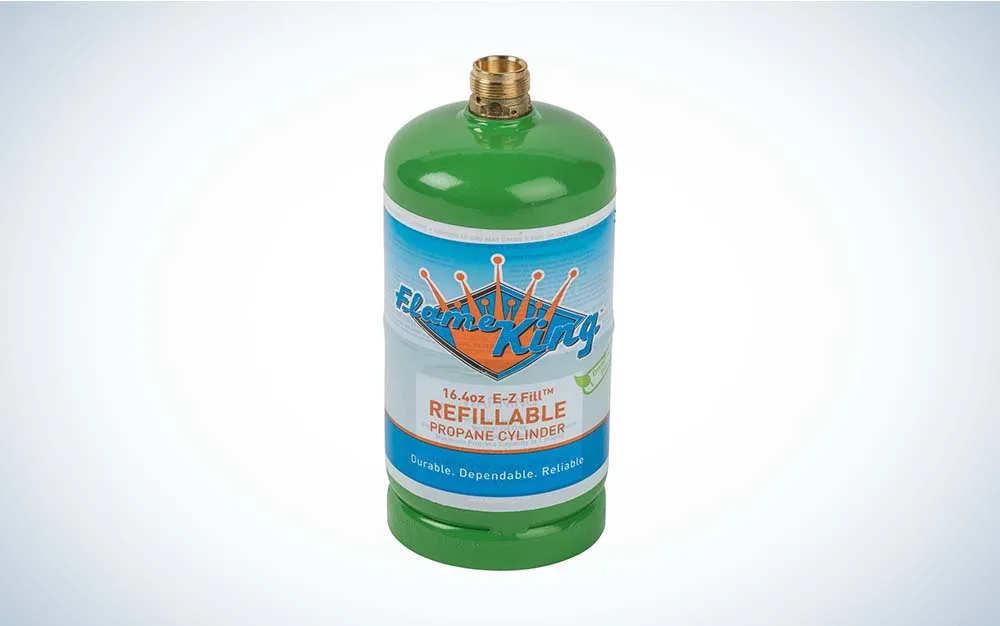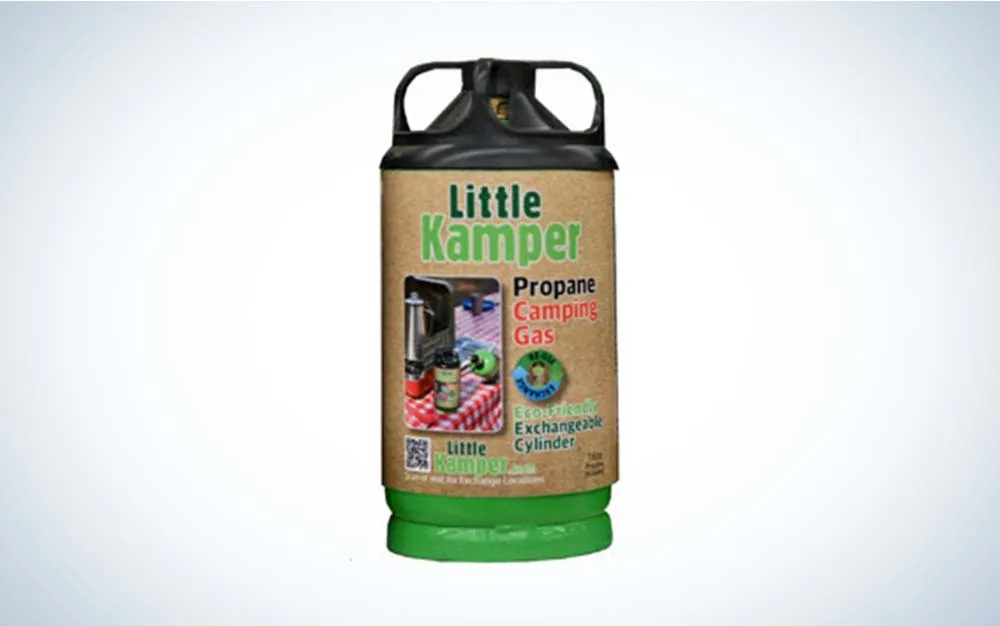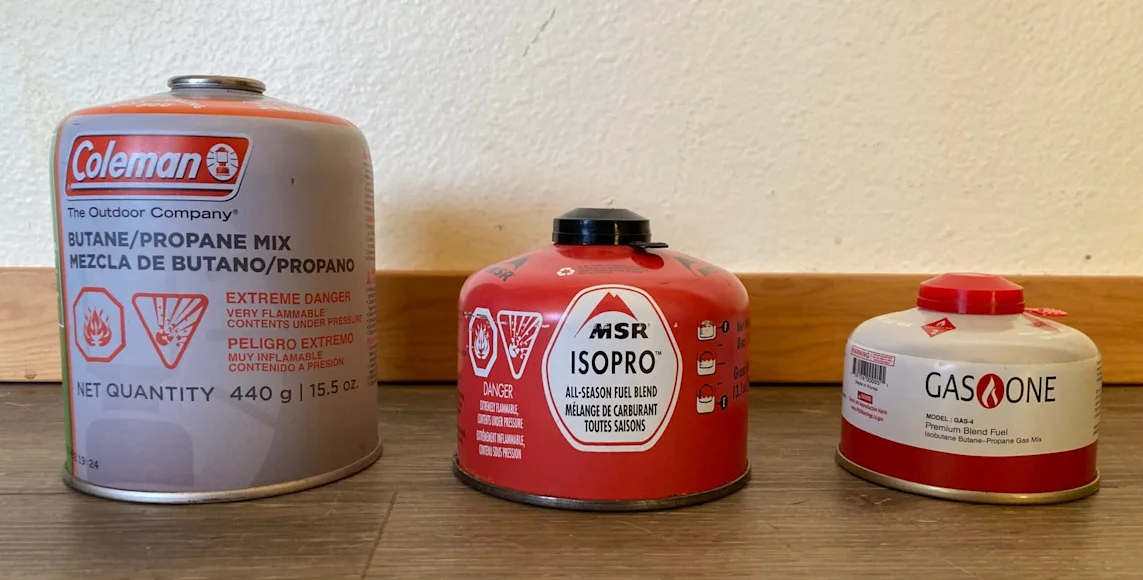_We may earn revenue from the products available on this page and participate in affiliate programs. Learn more ›
_
It is estimated that anywhere from 40-60 million 1lb disposable propane canisters are sold each year. These are among the most popular option for family camping trips or even some tailgate parties as they’re affordable and convenient. The problem is that these classic green cylinders associated with camp cooking create an extensive waste management issue as a safety hazard for workers.
With the high number of single-use propane canisters being sold and used each year, it’s not surprising that many end up in landfills because consumers do not have other options. Most local municipalities do not have the budget or resources to deal with them, and many major manufacturers of these single-use canisters do not have systems currently in place for recycling or return programs.
In some areas, this has become such an issue that we may soon see attempts to decrease waste associated with these disposable propane cylinders. California proposed a bill prohibiting the sale of these single-use propane canisters
(1lb DOT 39) within the state by 2028.
Still, as consumers, we are often left with empty propane cylinders that we don’t know how to dispose of properly. So, what are we supposed to do? Can we refill them? Is there a way to recycle them? The answers to these questions may not be what you want to hear, but the good news is we can answer them.
Can I Refill Disposable Propane Canisters?
As these propane canisters fill up park dumpsters or are left abandoned at campgrounds, I think we can all agree that there is a problem.
One solution that many people across the internet suggest is to refill them. They say this saves you a few bucks and is a more sustainable option. While those things may be true, this is a risky move that can jeopardize your safety and the safety of others. Federal regulations administered by the Department of Transportation
actually prohibit the transportation of refilled DOT 39 canisters (disposable 1lb canisters). Violating this involves a hefty fine and the potential of five years of jail time.
Despite this, the recommendation to refill single-use propane canisters is widespread, and many people still do it. There are even tools you can buy to make refilling them easier. Those who refill these canisters get around the regulations by only using refilled ones on their property and not transporting them for camping or other uses.
We do not recommend refilling disposable propane canisters due to safety concerns, especially if you overfill them. There have been incidents where these refilled canisters do explode, including one reported fatality.
If refilling small propane canisters used for camping sounds like the most sustainable option, you’re not wrong. So, to do this safely, purchase a refillable canister. The construction of a disposable vs. refillable container differs, which is partly why it isn’t considered safe to refill the DOT 39 canisters.
Refillable options are much safer and easier to refill yourself. These can save you money and the headache of properly disposing of the single-use canisters in the long run.
Another excellent option is using an alcohol stove
. These options are very affordable fuel-wise, and they are extremely easy to refill. They may not be as convenient as the classic green Coleman canisters. Still, they provide consumers with an easy refill option, and liquid fuel stoves tend to work better in cold weather or at high altitudes.
How to Recycle Disposable Propane Canisters
If refilling or throwing them away aren’t the best options, what are we left to do with these canisters then? They are made from steel materials (and steel is infinitely recyclable), but they are not easy to recycle because the pressurized fuel is a hazard to workers.
Before you go through the process described below to prep the canister for recycling, take the time to research whether or not your local recycling program accepts them. Usually, you can find this information on the municipality website or by contacting the recycling and waste management center directly.
Many recycling centers will not accept single-use canisters because of the safety hazard for employees. However, if they do accept them, they often require that you do the following before drop off:
Empty the container fully
Puncture the empty container
Visibly label container EMPTY
We will use Coleman canisters as an example as they are among the most popular disposable canisters. Coleman included a Green Key tool in every canister sale in 2009. The Green Key could be used to empty the canisters to be recycled safely.
Unfortunately, even with this tool, it was not widely accepted by recycling centers and has since been discontinued. Other brands have a similar device that does the same thing, such as the JetBoil CrunchIt Tool
. The other option for emptying the canister is to burn it off entirely by attaching it to your camp stove and lighting it in an open area. However, this is not always a guarantee and could be hazardous if you decide to puncture the canister.
The benefit of using the Green Key tool versus other options is that it permanently locks into the top of the canister. If your recycling center does accept these propane canisters, they can see that the canister is empty and is safe to handle for sorting and recycling.
Whatever you decide, do your research before disposing of the empty canisters. Some companies have been improving efforts to roll out recycling programs, some parks collect canisters, and some local centers accept empty canisters.
_O_nly drop off canisters if your recycling center accepts them. Dropping off canisters without knowing can not only be a potential hazard, but it almost always ensures they end up in landfills.
Parks that participated in the Zero Landfill Initiative
have begun plans to ensure proper disposal of canisters. One significant risk they avoid by adding these programs is fires and explosions during trash collection that could lead to wildfires. Some cities also host hazardous waste collection days or events. Be on the lookout for these types of programs so you can dispose of your propane canisters safely.
Unfortunately, because many local recycling centers or steel recycler’s still do not accept propane canisters, you may end up throwing them in the trash. If the only option is to throw them away, we recommend emptying them using a tool like the CrunchIt. That way, you do not have to worry about a potential hazard for waste management workers.
Opt for Reusables Instead
Reusing canisters is still the most sustainable option we have. To reuse propane canisters for camping safely, invest in a reusable one instead of a disposable one. There are not currently many options available, but here are two of our favorite 1lb reusable propane canister options.
Flame King Refillable 1lb Propane Cylinder

Little Kamper Refillable Propane Program

FAQ
Q: Are Coleman 1lb propane tanks refillable?
Technically speaking, yes, the green Coleman disposable canisters can be refilled using a 20lb propane tank, and there are adaptors to help you do this. We do not recommend refilling these canisters as there is a risk of overfilling or leaks. Some potential hazards and risks greatly outweigh the cost-benefit of refilling these canisters.
Q: How do I know my propane canister is empty?
Using a CrunchIt tool or a Green Key, if you have one, you will know the canister is empty when no more fuel can leak out. You can also compare the tare weight of the canister. Some tools allow you to puncture pressurized steel canisters safely and, when held in place, will let remaining fuel escape before removing the tool.


